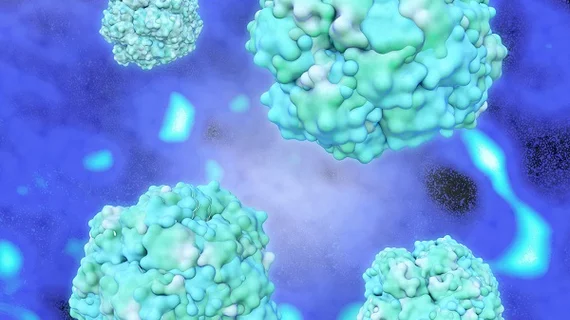Researchers find best MRI sequence for whole-body PET/MRI to diagnoses high-risk prostate cancer
Of the various MRI sequences imagers can utilize for whole-body 18F-fluorocholine (FCH) PET/MRI staging of patients with high-risk prostate cancer, researchers found that diffusion-weighted magnetic resonance imaging (DWI) or gadolinium-enhanced T1-weighted volumetric interpolated breath-hold examination (VIBE) sequences are the most efficient, according to new research published online on Oct. 17 in the American Journal of Roentgenology.
Lead author Ur Metser, MD, and colleagues also found the most time-efficient sequence with the highest lesion detection rate was gadolinium-enhanced T1-weighted VIBE.
For their comparative analysis, the researchers recruited 58 patients with untreated high-risk prostate cancer, of whom ten underwent whole body FCH PET/CT and 48 underwent whole body MRI.
MRI sequences including Dixon T1-weighted, turbo inversion recovery magnitude, whole body DWI, and gadolinium-enhanced T1-weighted VIBE. Two radiologists then recorded the patients’ metastatic sites, acquisition time and conspicuity of metastatic tumors.
Study results included the following:
- Total whole-body acquisition times were 1 minute, 25 seconds for Dixon T1-weighted; 15 minutes, 7 seconds for turbo inversion recovery magnitude; 16 minutes, 33 seconds for WB DWI; 1 minute, 28 seconds for gadolinium-enhanced T1-weighted VIBE.
- The lesion detection rates were 88.3 percent for Dixon T1-weighted, 94.8 percent for turbo inversion recovery magnitude, 95.2 percent for whole body DWI and 97.4 percent for gadolinium-enhanced T1-weighted VIBE sequences.
- Moderate or high conspicuity scores were assigned to 62.3 percent of lesions for Dixon T1-weighted, 88.3 percent of lesions for turbo inversion recovery magnitude, 90.5 percent of lesions for whole body DWI and 92.2 percent of lesions for gadolinium-enhanced T1-weighted VIBE sequences.
- Conspicuity of metastases on gadolinium-enhanced T1-weighted VIBE and whole body DWI sequences was higher than that on Dixon T1-weighted sequences.
“Although a limitation of the current analysis is the use of FCH only, we think that these results are likely to be applicable to other radiotracers, including prostate-specific membrane antigen,” the researchers wrote. “Although the sensitivity of prostate-specific membrane antigen to metastatic lesions differs from that of FCH, the contribution of MRI is likely to be similar.”

